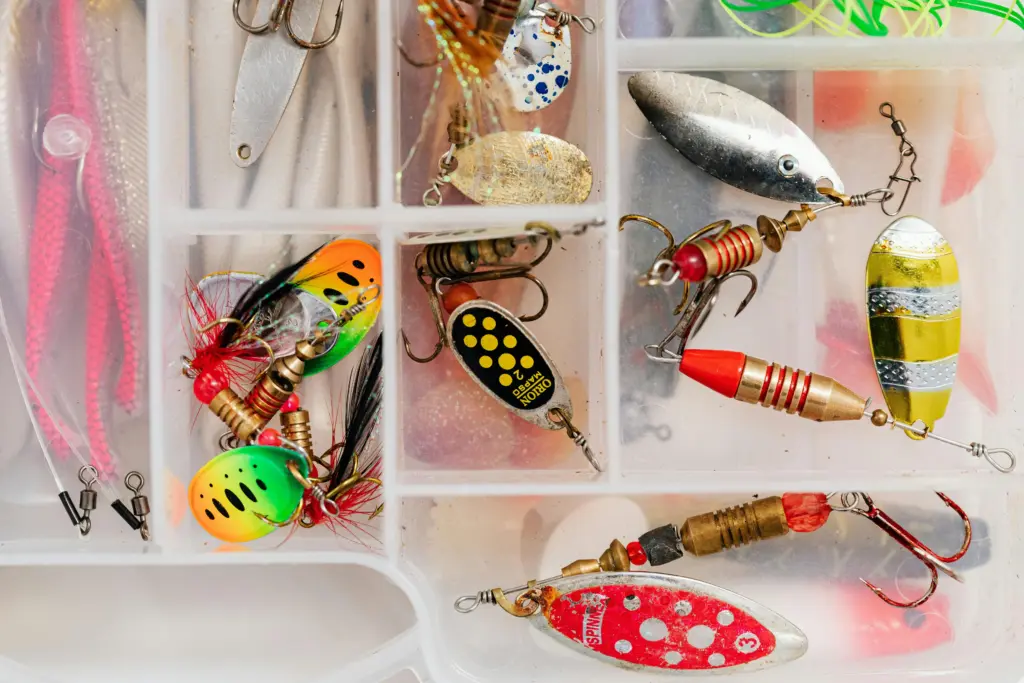Live Bait vs Artificial Lures – When targeting pelagic species like tuna, mahi-mahi, sailfish, or wahoo, choosing between live bait and artificial lures can make or break your day on the water. In this blog post, we’ll dive into the pros, cons, and practical tips to help you decide which strategy works best for your next offshore adventure.
When it comes to offshore fishing for pelagic species such as tuna, mahi-mahi (dolphin), wahoo, kingfish, and sailfish, one question always stirs debate among anglers: Should you use live bait or artificial lures?
The answer isn’t always clear-cut. Conditions, target species, local bait availability, and even water clarity all factor into the decision. At Reel Experience, where we chase big game fish in the blue water off Florida’s Gulf Coast, we’ve seen success with both. Here’s how the two methods stack up.

The Case for Live Bait
1. Natural Presentation
Live bait is the real deal. Whether it’s a lively threadfin herring, cigar minnow, or blue runner, these baits move naturally, sending out subtle vibrations and scent trails that predator fish key in on. For wary or pressured fish, this can be a game-changer.
2. Ideal for Suspicious Fish
Certain pelagic species, especially sailfish and larger tuna, can get picky—especially in clear or calm water. Live bait can entice a bite when artificial lures are getting snubbed.
3. Versatility in Rigging
Live bait can be slow-trolled, drifted, or fly-lined, depending on the conditions. It allows the angler to fine-tune presentation to match fish behavior that day.
Drawbacks of Live Bait:
- Requires a well-maintained livewell and extra equipment.
- Time-consuming to catch or buy fresh bait.
- Bait may not survive long if improperly handled or rigged.
The Strength of Artificial Lures
1. Cover More Water, Faster
Trolling artificial lures allows you to target aggressive feeders like wahoo or mahi-mahi efficiently. You can fish multiple lines at higher speeds and cover a wider area quickly.
2. Less Mess, More Action
No need to worry about keeping bait alive or cleaning up after messy baitfish. Plus, modern lures—from skirted ballyhoo imitations to deep-diving plugs and high-speed trolling lures—are incredibly effective.
3. Ideal for Specific Species
Wahoo and kingfish, in particular, are suckers for fast-moving lures. Bullet-head skirts and diving plugs trolled at high speed mimic fleeing prey and trigger hard strikes.
Drawbacks of Artificial Lures:
- Less enticing to hesitant or pressured fish.
- Lure selection and color patterns can be overwhelming.
- Not always effective during slow bites or when fish are feeding deep.
Species-Specific Preferences
Mahi-Mahi (Dolphin Fish):
Will hit just about anything when they’re fired up. Artificial lures work great to find them, but switching to live bait can keep them around the boat longer and draw in larger fish.
Sailfish:
Tend to favor live bait, especially when slow-trolled or kite-fished. Goggle-eyes, pilchards, and threadfins are top choices.
Tuna (Blackfin & Yellowfin):
Live bait is the top choice when tuna are finicky, but trolling small feathers or cedar plugs at sunrise can produce amazing results.
Wahoo:
One of the few pelagics that often prefer fast artificial lures. High-speed trolling with heavy lures can provoke explosive hits.
When to Use Each Method
Use Live Bait When:
- Fish are finicky or feeding selectively.
- Water is calm and clear.
- Targeting species like sailfish, blackfin tuna, or large mahi-mahi.
- You’re drifting or slow trolling near structure or bait schools.
Use Artificial Lures When:
- You want to cover large areas.
- Targeting speedsters like wahoo and kingfish.
- Bait is unavailable or conditions make live bait impractical.
- You’re on a time crunch and need to fish fast.
The Reel Experience Approach
At Reel Experience in Naples, Florida, we combine both techniques depending on the trip’s goal, the targeted species, and real-time conditions. Some of our best offshore trips start with lures to locate fish and switch to live bait once we’ve dialed in on a school.
We customize every charter to give our guests the best chance at landing trophy pelagic fish—and that means having the right gear, the right baits, and the right knowledge.
Final Thoughts: What’s Right for You?
There’s no one-size-fits-all answer in the battle between live bait vs. artificial lures for pelagic species. Both have their place and power. Success offshore often comes from using both methods strategically—or knowing when to switch.
Want to see both in action? Book a charter with Reel Experience, and we’ll show you how the pros do it. Whether it’s a blitz of mahi under a weed line or a monster wahoo strike on the troll, we’ll tailor your trip to maximize your success.
Ready to target pelagic giants?
Contact ReelExperience.net to book your next deep-sea adventure.